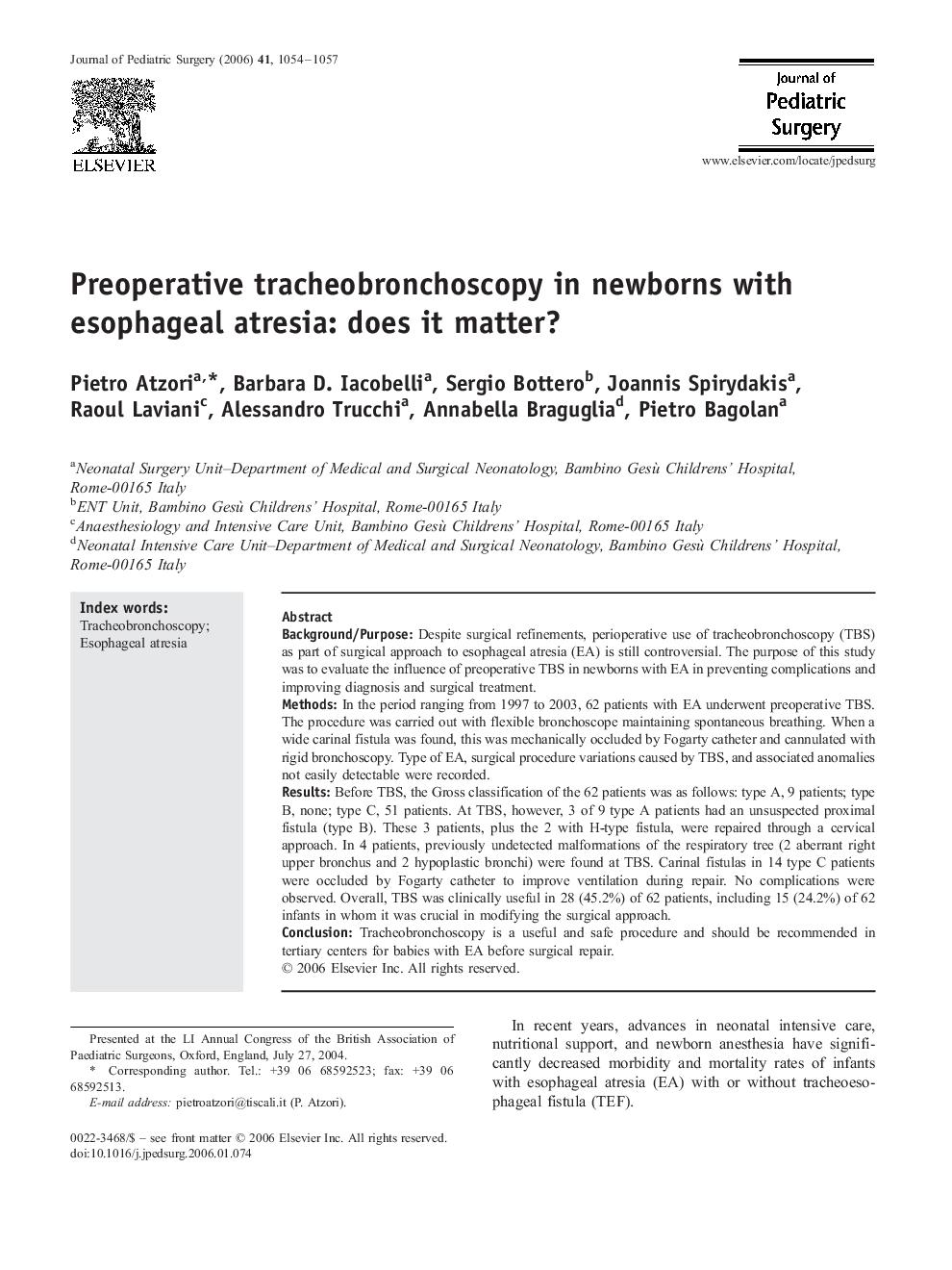| کد مقاله | کد نشریه | سال انتشار | مقاله انگلیسی | نسخه تمام متن |
|---|---|---|---|---|
| 4160230 | 1273840 | 2006 | 4 صفحه PDF | دانلود رایگان |

Background/PurposeDespite surgical refinements, perioperative use of tracheobronchoscopy (TBS) as part of surgical approach to esophageal atresia (EA) is still controversial. The purpose of this study was to evaluate the influence of preoperative TBS in newborns with EA in preventing complications and improving diagnosis and surgical treatment.MethodsIn the period ranging from 1997 to 2003, 62 patients with EA underwent preoperative TBS. The procedure was carried out with flexible bronchoscope maintaining spontaneous breathing. When a wide carinal fistula was found, this was mechanically occluded by Fogarty catheter and cannulated with rigid bronchoscopy. Type of EA, surgical procedure variations caused by TBS, and associated anomalies not easily detectable were recorded.ResultsBefore TBS, the Gross classification of the 62 patients was as follows: type A, 9 patients; type B, none; type C, 51 patients. At TBS, however, 3 of 9 type A patients had an unsuspected proximal fistula (type B). These 3 patients, plus the 2 with H-type fistula, were repaired through a cervical approach. In 4 patients, previously undetected malformations of the respiratory tree (2 aberrant right upper bronchus and 2 hypoplastic bronchi) were found at TBS. Carinal fistulas in 14 type C patients were occluded by Fogarty catheter to improve ventilation during repair. No complications were observed. Overall, TBS was clinically useful in 28 (45.2%) of 62 patients, including 15 (24.2%) of 62 infants in whom it was crucial in modifying the surgical approach.ConclusionTracheobronchoscopy is a useful and safe procedure and should be recommended in tertiary centers for babies with EA before surgical repair.
Journal: Journal of Pediatric Surgery - Volume 41, Issue 6, June 2006, Pages 1054–1057